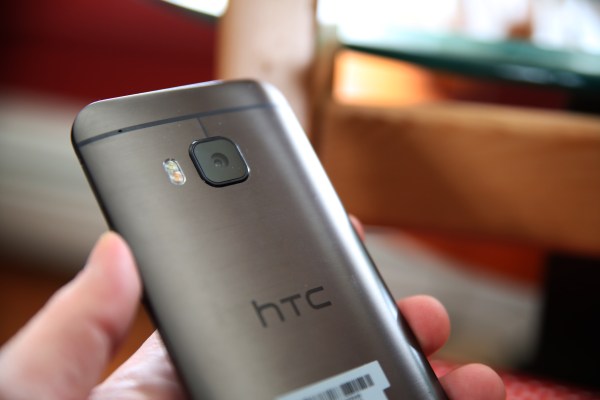Despite not unboxing a new high end smartphone at Mobile World Congress this week, embattled mobile maker HTC has told TechCrunch it’s not ready to admit premium defeat — saying it has a new flagship device coming soon.
It’s also hinted it might consider getting into mobile VR in future — presumably as a step to try to revive interest in its premium smartphones. Earlier this month the company posted a $101 million net loss for Q4 2015, with CFO Chialin Chang admitting sales of its flagship HTC One M9 “fell short of expectation” last year.
Meanwhile, this time last year the company took the wraps off of a high end VR headset — called Vive — plus partnership with games publisher Valve to build a virtual reality ‘experiences’ ecosystem. So it has at least been riding high on recent plentiful VR hype.
A year on from the Vive unveiling, the pair announced pricing for their ‘room-scale’ VR experience at MWC16. The headset, which will go on sale in April, costs $800 (plus the price of a powerful enough PC to drive it).
So, as with rival device the Oculus Rift, it’s not being priced for mainstream adoption — leaving plenty of room for a more budget VR experience, a la Samsung’s smartphone-powered Gear VR, should HTC decide it can afford to spread itself a little more thinly.
Asked directly about the possibility of the company making a phone-powered VR headset, Drew Bamford, corporate VP of HTC’s Creative Labs, told TechCrunch: “I can’t comment on our future roadmap but you can imagine HTC is as design led and innovation led business and of course it would make sense for us to work on more kinds of VR products, and products that unite our phone business and our VR business in ways that make sense.”
Company chairperson Cher Wang was quoted in The Telegraph last month saying VR is now the main priority for the company, telling the paper: “Yes, smartphones are important, but to create a natural extension to other connected devices like wearables and virtual reality is more important.”
Despite Wang apparently de-emphasizing smatphones by prioritizing VR, Bamford said HTC remains committed to the phone space — and not just to making mid-range devices either (at MWC this week it released a clutch of mid-range handsets, leaving new premium offerings from Samsung and LG to go unchallenged).
So have we seen the last flagship device from HTC? “No, absolutely not,” said Bamford. “And in fact you should expect an announcement about our next flagship very soon.”
“We are absolutely committed to making the world’s most desirable, best phone products in both the premium segment, with the One series, the M Series, and in the mid range with the Desire products,” he added.
“And we’re continuing — one of the reasons I’m here this week is we’re talking to our operator partners about our next generation phone products, and there’s all sorts of exciting work going on there. We will have some really cool stuff on the market.”
Last month HTC also denied rumors it is looking to spin out its VR business into a standalone company. Such a move might be premature — given that mass market VR adoption is more likely to come from a $100-priced device like Samsung’s Gear VR than a $800+ high end system. So having both a high end VR play and a smartphone business under one roof might position HTC to plug into both (nascent) markets.
“We have multiple priorities. This is a common theme at HTC,” added Bamford. “There’s always more than one priority. Certainly the phone business is also a priority. And still far and away our biggest business and in fact we’ve only just started selling the wearables in January. And we have not started the VR product so actually phones is our main business absolutely.”
Bamford went on to describe the “problem” of designing how different connected products work together as both “really exciting” and “an opportunity”.
“These days in interaction design some of the most interesting opportunities are how do you make disparate products function as a system,” he said. “We’ve tackled that at a smaller scale with our wearables – with the Healthbox which is a kit of three products that are integrated into a system, united by a software and service back end.
“And there’s an opportunity to do that at a higher level with phones, wearables and VR. Think about how do those product categories work together.”
